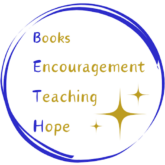This was first posted on elizabethannewrites on April 23, 2011.
A friend recently recommended to me a list of picture books on the topic of bullying. Serendipitously, I encountered a chapter book/middle-grade novel on the same subject just a day or two after she’d sent me the list. Bullying is an experience that all too many children face, and it is not something new, as the books I will be discussing will attest to.
Including the chapter book, these books cover a span of more than sixty years, yet each can still speak to children (and adults) of the pain that bullying causes, and of the ways it drags both bully and bullied down so that neither can be fully what they’re meant to be. All the books also speak to the remarkable ways in which people can learn and grow and change, and can become stronger through facing adversity and winning through.
This post will introduce you to the oldest book in the batch, the chapter book/middle-grade novel. Two subsequent posts will look at the six picture books my friend suggested to me.
Louis Slobodkin’s simply-wrought colorwash cover illustration for 1944 Newbery Honor book The Hundred Dresses by Eleanor Estes immediately evokes the lonely feeling of being an outcast that many bullied children will know all too well. Although there is no facial detail in the portrayal of the child leaning against a red brick wall, her downcast face and slumped shoulders bring us into her feeling of isolation, hurt, despair. This is added to by the depiction of two children in the distance, obviously playing and having fun, totally ignoring the girl in the foreground. Framing the “shot”, a bare-branched tree leaning toward the girl echoes her slumped posture and feeling of loneliness.
Estes draws us in by first introducing us to two of the most popular girls in the school class, Peggy and Maddie, who are shown as frequently waiting for another girl, Wanda, so that they can “have fun” with her. This seemingly innocuous phrase is used repeatedly in the first part of the book, so that the reader is not just sure of Peggy’s and Maddie’s purpose. As we continue to read, we learn that they are really waiting for her in order to “make fun” of her, which has a very different feeling behind it, and finally Estes does use this phrase after she has illustrated by the words and deeds of the girls just what kind of “fun” they are having with Wanda.
Wanda is a poor, Polish girl from the wrong side of the tracks, who, yearning to be accepted by the others, tells them that she has one hundred dresses lined up in her closet at home. Since she wears the same wrinkled (though clean) blue dress to school every day, the girls do not believe her, and Peggy as the ringleader (and there always is a ringleader who eggs the others on, isn’t there? In fiction, and in real life.) begins the daily practice of “having fun” with Wanda — asking her about her one hundred dresses, teasing her, tormenting her. Maddie, Peggy’s best friend, feels all along that there is something wrong with what they are doing, but justifies their actions to herself, and does not speak out against Peggy. (This feels uncomfortably familiar, as well.)
This continues until one day, Wanda is not at school.
It takes a few days for it to really register with Peggy and Maddie and their cohort that Wanda has been missing from school for a while, then their teacher receives a letter from Wanda’s father to indicate that the family is moving to another city, where there will be other Polish immigrants, and they will no longer feel tormented by the people around them. This provides the wake-up call that both Maddie and Peggy needed, and as they learn their own much-needed lessons, they also learn the truth about Wanda’s one hundred dresses, and Wanda — even in her absence — gains a new respect from her former adversaries.
This book draws the reader in to truly experience the feelings of both bully and bullied — as well as the feelings of those whose conscience pricks them, but who, for one reason or another, ignore that niggling feeling of “this is not right”. The language in the book is easily accessible for children aged eight and up, and the concepts in the book can be understood at least to some extent by younger children. The book, read either by a child alone, or by a parent/caregiver with the child, could provide an excellent springboard for the discussion of what it feels like to be bullied, but also what it feels like to have some sort of power over someone else, or to be one who knows that what is being done is wrong, but does not speak up. Despite the book’s age, these themes are timeless.
As an added note of realism, there is a foreword by the author’s daughter, indicating that this book grew out of a situation in Eleanor Estes’ own childhood, in which she was the one who stood by and didn’t say anything to stop the teasing. The book was her way of somehow making things right. I don’t know if the girl in Eleanor Estes’ own experience ever read the book, but I believe that Estes certainly did “make things right”.
